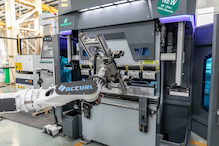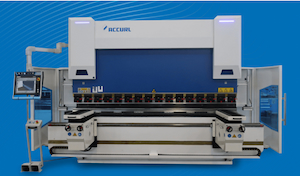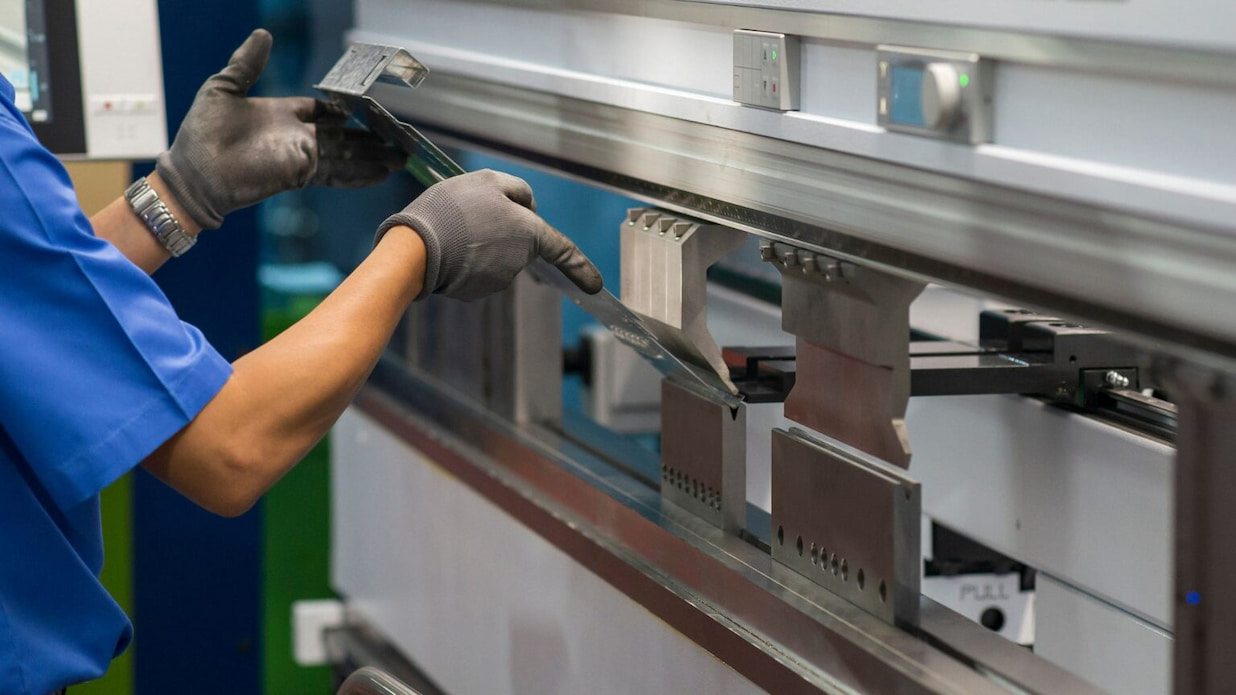What are the basics of bending on a bending machine?
Feb 11, 2025
First, the basic concept and classification of bending machine
Step 1 Define
A bending machine is a device that produces plastic deformation in a mold by applying pressure to a sheet metal to form a predetermined Angle or shape.
2. Main types
Mechanical bending machine: pressure is provided by mechanical transmission (such as gears, crankshaft), simple structure but low precision, suitable for small machining.
- Hydraulic bending machine: driven by hydraulic system, high pressure, high stability, suitable for medium and thick plate processing.
Numerical control bending machine (CNC) : through the CNC system to control the bending Angle, pressure and rear stop material positioning, high precision, high efficiency, suitable for mass production of complex workpieces.
- Servo electro-hydraulic bending machine: Combining hydraulic and servo motor technology, energy saving and fast response speed.
Second, the core structure and function of the bending machine
1. Fuselage: The frame that supports the overall structure must have high rigidity to withstand bending forces.
2. Slide block: a pressure component that moves up and down to connect the upper die and apply pressure.
3. Workbench: a platform for fixing the lower die, usually equipped with an adjustable V-shaped slot.
4. Hydraulic system (hydraulic/electro-hydraulic model) : composed of oil pump, cylinder, valve group, etc., to control pressure and stroke.
5. Back Gauge: the key component of CNC bending machine, which is used for plate positioning and directly affects bending accuracy.
6. Numerical control system (CNC model) : input parameters (Angle, pressure, stroke) to control the bending process.
Third, basic knowledge of bending process
1. Bending principle
- Pressure is applied to the sheet through the die to cause plastic deformation of the material.
- Key parameters: bending Angle, bending radius, bending force (related to material thickness and strength).
2. Material characteristics
- Elastic modulus: the ability of the material to resist deformation (such as stainless steel, which needs over-bending compensation).
- Minimum bending radius: Avoid material cracking, depending on material thickness and type.
- Springback: The Angle bounce of the material after unloading needs to be compensated by bending or mold design.
3. Bending force calculation
- Formula: 'P = (1.42 × σb × L × t²)/V'
-σb: Material tensile strength (MPa)
-L: Bending length (mm)
-t: Material thickness (mm)
-V: lower die opening width (mm)
Four, mold selection and use
1. Mold type
- Upper die (Punch) : Common shapes include sharp knife die, curved knife die, gooseneck die.
- Lower Die (DIE) : The bending radius is determined by the width of the V-shaped groove, which should be selected according to the thickness of the material (usually the width of the V-port = the thickness of the material ×8).
- Special mold: used for rolling, flattening, multi-step molding and other processes.
2. Mold materials
- Tool steel (Cr12MoV), alloy steel, heat treatment to improve wear resistance.
3. Matching principle
- Ratio of plate thickness to V-groove width (usually 1:8) to avoid material deformation or mold damage.
5. Operation process and safety specifications
1. Procedure
- Equipment inspection (hydraulic oil, lubrication system) → Select mold → input parameters (Angle, pressure) → Position plate → bending test → adjustment compensation → mass production.
2. Safety precautions
- Wear protective gloves/glasses to avoid cutting the board burrs.
- Do not put hands in the mold area.
- Check the tightness of the hydraulic system regularly to prevent oil leakage.
Six, common problems and solutions
1. The rebound is too large
- Solution: Increase bending Angle compensation, use mold with correction function or CNC system.
2. Bending crack
- Reason: poor material ductility or bending radius is too small → Replace soft material or increase R Angle.
3. Size deviation
- Calibrate rear stop, check mold wear or NC system parameters.
Seven, equipment selection and market positioning suggestions
1. Target customer analysis
- Sheet metal processing plants, chassis cabinet manufacturers, auto parts companies, etc.
2. Equipment selection
- Small enterprises: hydraulic CNC bending machine is recommended (economical and practical).
- High-end market: servo electro-hydraulic bending machines or high-precision models with laser detection.
3. Technology trends
- Intelligent: Integrated AI Angle compensation, automatic mold change system.
- Energy saving: servo motor drive to reduce energy consumption.
Maintenance and maintenance
1. Routine maintenance
- Clean mold and table debris.
- Check hydraulic oil level and oil quality.
2. Regular maintenance
- Replace hydraulic oil filter every 500 hours.
- Lubricate moving parts such as guide rails and lead screws.



